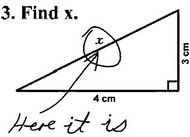Melina: Still Alive
Hi all,
Sorry to be such an absentee blog hostess. I've been working, watching woot, carousing, and practicing theater tricks with the Urban Caballero (pretending to walk into walls, stage-slapping each other on the subway platform).
Actually, the Urban Caballero was in an excellent show this week. It was high concept, which I usually hate, but I make an exception for this one. His co-stars, all highly entertaining, included a number of Ivy League alumni, an electronic music artist, an up-and-coming actor who just got his big break starring in an Italian panty liner commercial, and a couple of hard-drinking, Gothic-influenced Australians. The director, a tall sleepy-eyed young man with a silky 1960s-style beard, staged the play in several different rooms in one building at Columbia. Between scenes, a solemn usher carrying a boombox would escort us to the next room, while cast members rushed or wandered by, or conversed with each other, in character, in the hallways.
This succeeded in making us all feel extremely uncomfortable. The first scene was set in the building's computer lab. We all sat down at computer stations, where "our Gmail" was already open. As the scene went on around us, we were presented with additional side-commentary via GChat. This worked perfectly, because all of us Millennial-generation computerheads are incapable of sitting down at a computer without opening our Gmail, and to see a GChat talking to us, when we were unable to respond, was deeply disturbing.
I actually think someone could make a great theater piece using only instant messenger. IM'ed communications possess a unique combination of urgency and inscrutability that would lend itself very well to drama.
Another classic scene today: going to get a picture framed. New York picture framers are a noble, tragic breed. They strive to perfection - the perfect match, the perfect rectangle - but are inevitably undone by the errors of others: the artists, who inconsiderately paint to the very edges of their canvases; the customers, who don't know what they're looking for ("a chrome? or a silver? with rounded edges? No, wait, maybe it was squarer than that...") and who always think the framers are out to cheat them.
Visiting the framing store, I was privy to a conversation between a (distressed) customer and an (irritable, resigned) framer.
Customer: "This frame you put on my picture is crooked."
Framer: "The frame is straight. It is your picture that's crooked."
Customer: "But it is closer on the left side than on the right side."
Framer: "It is closer at the top of the left side. It is farther at the bottom of the left side. That is because the canvas is wider at the top than at the bottom."
Customer [unhappily rocking picture back and forth]: "What if you shifted the painting farther toward the left?"
Framer [staring, also unhappily, at picture]: "Then it would be *really* close at the top left corner."
Customer: "Did you try moving it higher up in the frame?"
Framer: "That wouldn't help."
Customer: "Why?"
Framer: "Then it would still be uneven, but it would just be farther than the bottom."
Customer: "What if you made it even at the top?"
Framer: "Then it would be uneven at the bottom."
Customer: "But why can't you move it any closer?"
Framer: "The artist painted around the edges of the canvas. We talked about this. We didn't want to lose that much of the painting."
Customer: "Not any closer?"
Framer: "We talked about this."
[Pause.]
[Customer sadly eyes painting. Framer sadly eyes customer.]
Customer: "So...." [pause] "So you're saying, basically, this is the best you could do?"
Framer [patiently, resignedly] nods.
Customer: "Well then... okay." He pays and leaves.
Two thirds of arguments, I think, could be boiled down to this final exchange.
"Was this really the best you could do?"
"Yes."
"Then okay."
They would have saved a lot of time if they'd just cut to that part sooner.
Endlessly searching for perfection,
--Melina
Labels: hannah



 A few of my daughter
Melina's great posts:
A few of my daughter
Melina's great posts:








0 Comments:
Post a Comment
<< Home